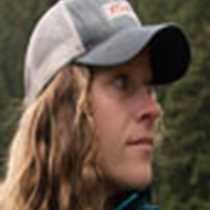The Weddell Sea sits on the eastern side of the Antarctic Peninsula. Often surrounded by ice, and with pack ice that extends further than anywhere else around the continent, this expansive polar sea is frequently inaccessible to ship traffic.
The continent of Antarctica is divided into four quadrants for ice sheet surveillance. When a new, substantial piece breaks off (more than ten miles in length), it is given a name, beginning with the quadrant it was born in (A, B, C, D) followed by the number of large icebergs recorded from that region. Large icebergs often break off from quadrant A. A-68A is an iceberg born recently, with an impressive length of 86 miles – the name indicates birth from quadrant A (the Larsen C ice shelf), and 68 denotes that this iceberg is the 68th to originate from this specific quadrant. The final A tells us that this berg was originally larger, and A-68B also exists somewhere in the Southern Ocean (and must be longer than ten miles). This piece of ice will likely break down over years into several smaller pieces until its eventual disintegration, likely several decades from now.
National Geographic Explorer cruised along the western edge of A-68A throughout the morning, searching for wildlife and the fast ice edge. The towering tabular iceberg sat higher than the ship’s Bridge, and in fact larger than the state of Delaware.
From there, the ship carried on south. In the fog, the passing sheets of sea ice looked empty but for a few penguins. As we continued, the staff members and Bridge team searched to find the largest, most elusive of the penguin family. With keen eyes and dedication, the team found them! Emperor penguins, on the ice! Several were seen swimming in the water, preening on the ice, and coexisting with Adélie penguins.
After our wonderful sighting of big birds, the ship went out in search of fast ice. It’s difficult to find strong fast ice any time past November, but with fingers crossed, the team set out. It turned out to be a blessing in disguise that the fast ice was nowhere to be found because instead an entire pod of B1 killer whales was spotted, hunting among the pack ice! Large, incredible, and intelligent creatures, these whales hunt as a team and work to wave-wash seals off ice floes. Once in the water, the animal has no chance against the powerful jaws of a killer whale.
A fantastic day aboard was followed by Recap with information about all of today’s critters. We shared a beautiful meal with wine and libations, and folks went to bed with smiling faces and incredible animal sightings in tow–emperor penguins and killer whales all in one day!









